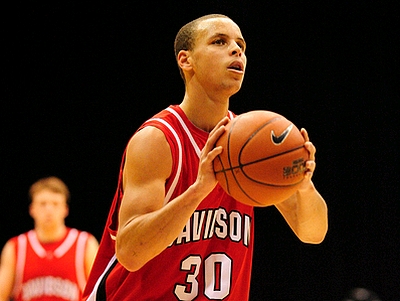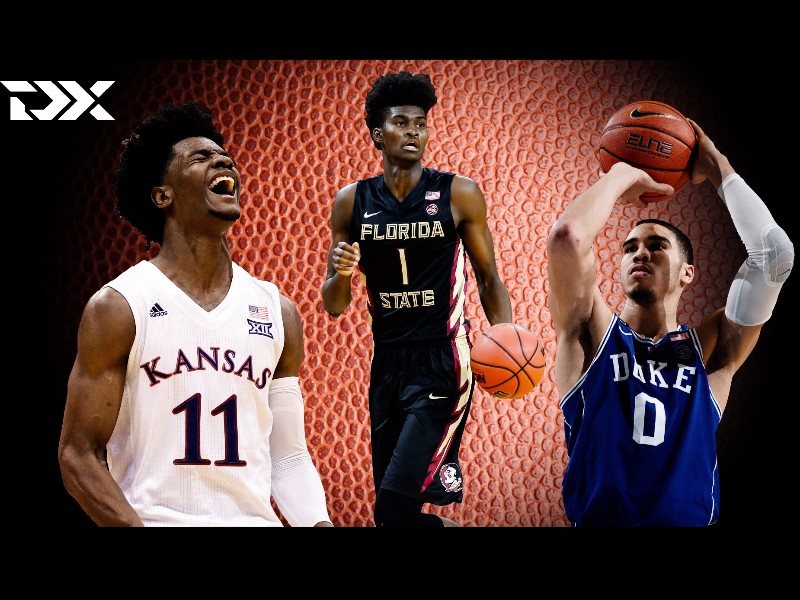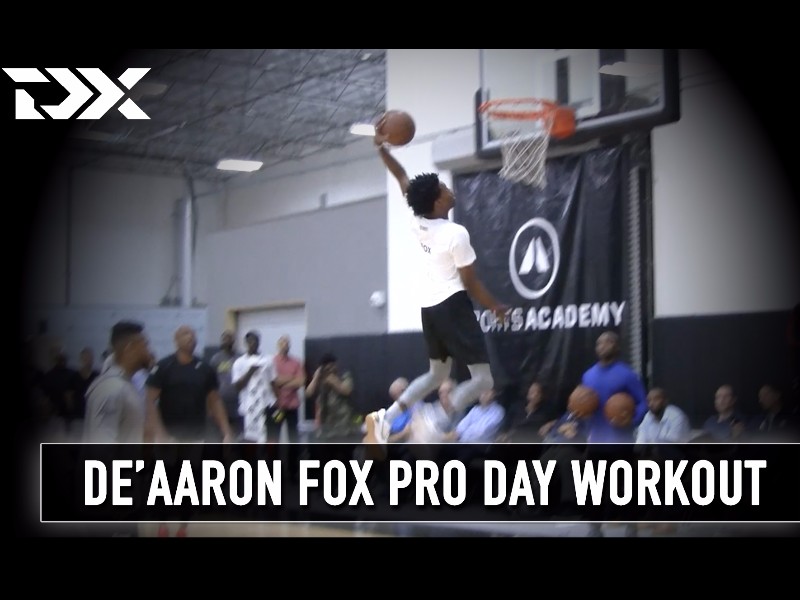-The Gradual Erosion of the NBA Pre-Draft Process
-How would the 2014 NBA Draft Look Based Solely Off RSCI Rankings?
The erosion of the NBA draft process took a critical look at the value of the information the NBA Combine provides teams. One of the key insights from this year's event was that many teams were using the interview portion to collect key information about players they weren't going to draft. Savvy organizations realize that collecting data on a player's personality is a vital component for effective evaluation in the future. The more they know about a player, the easier it is to understand how he handles the situations he's placed in going forward.
More From Eric Weiss
Breaking Bad: The Thin Line Between Busts and Steals
But, the past is often a great indicator of future performance. Using high school recruiting rankings and comparing them to a player's draft stock can be a helpful tool for sleuthing out early indicators that might lead to success and failure. In psychology, the term Interactionism means the study of how both personality and situation impact behavior. It's a simple concept that we all experience. We don't act the same way in every environment we're placed in. The pressure to conform to the rules that govern a situation impacts how we act.
Some basic examples of this can be found easily enough just by going through DraftExpress' extensive interview library. Listen to how some of these McDonald's All-American's perceive themselves at age 17 when they are at the heart of the recruiting world. Yet, traveling to Portsmouth Virginia for the Seniors Only Invitational and the D-League Showcase in Renowhere many of these All-Americans end up eventually-- provides a sobering look at how quickly one's star can fall. If only reality TV could transform these two events into a Scared Straight program for aspiring young basketball players...
This Nature/Nurture perspective is never more aptly displayed than when analyzing basketballs "Super Elite" prospects. These Top-25 ranked high school recruits (described as RSCI-25 from here on out) have grown up surrounded by great expectations and showered with accolades at a young age. But, in just a few short years, a significant portion of this group will go from celebrated to scrutinized, as they struggle with their own limitations while adjusting to the demands of the NBA. Meanwhile, a group of Non-Elite from outside the RSCI-150 (described as Non-150s) will find themselves in similar situations post-draft.
However, this group's rise from scouting service obscurity tells a much different tale as far as the back story goes. They may have both arrived at the same point, come draft night, but their circumstances were much different and demanded different mental approaches to get there. Part One of Opportunity Knocks will focus on how prestige and privilege allows for more character flaws among the Super Elite by analyzing the behavioral trends of 71 RSCI-Top-25s and 46 Non-150's who were fortunate enough to find themselves drafted in the first round. What can we learn about each group?
Rising Up Through the Rankings
There are some immediate differences evident between the RSCI-25 and those draftees who were ranked outside the RSCI-150. Analyzing these differences by five Critical Core DynamicsTM of teamwork can help outline these differences. These CCD's are part of Sports Aptitude's classification system, which categorizes players based on shared patterns in their personality data:

Using these categories allows us to study variations in individual behavioral traits among the Super Elite and Non Elite 1st Rounders. More detail on the classification system can be found at the end of the article. For the purposes of this article, internationals were included in the Non-Elite sample. The international development process places a greater emphasis on achievement and less on star power, which we've found reflects in their similarities to the US Born Non-Elite group in the selected categories of focus.

Team Identity: Measure of how a person interacts with other members of the team.
There are 12% less Guarded/Calculating Non-150's players who aren't heavily influenced by personal relationships or an overwhelming need to be part of a group. This group is also 12% more Self-Disciplined, 10% less Relaxed, and 15% less Change-Seeking compared to their RSCI25 Guarded/Calculating counterparts.
Translation: There are more introverts among the Super Elite and their talent lets them get away with a number of bad habits. They don't have the same intensity and are quicker to look for a change of scenery if things aren't working in their favor. They're used to the world bending to their needs and generally believe that those needs should be attended to. The players who don't enjoy such lofty reputations have to have a more diligent approach to accepting the situations they are placed in, while channeling their intensity into more productive areas for their individual growth.
Internal Motivation: Measure of a person's desire for structure, organization, and governing authority.
There are 11% more Open/Engaged Non-150's Players who have solid work habits, but who are influenced greatly by the environment they're placed in. This group is also 14% more Team-Oriented, 12% more Risk-Taking, and 15% more Stable compared to their RSCI25 Open/Engaged counterparts.
Translation: The Super Elite can afford to be more independent in their decision-making and are given more free passes for their emotional ups and downs. The Non-Elite looking to rise have to take more risks to get where they want to be and must have the composure to handle those situations well. They rely more on collaboration with teammates to solve problems and figure out how to fit their goals into the overall team objectives. Talent alone isn't going to win this group allies, their consistent approach and willingness to step up to challenges while still including others is the way they earn their respect.
Dominance: Measures a person's competitive edge and desire to fight for control during competition.
There are 15% more Bold/Combative Non-150's Players who are highly assertive, play with an edge, are tough-minded, stubborn, and seek out challenges without fear. This group is also 11% more Controlling, 12% less Self-Doubting, and 11% less Rule-Bound compared to their RSCI-25 Bold/Combative counterparts.
Translation: This ultra-competitive category can be the difference between becoming a role player or rising to stardom on the college level. In the fast-paced world of recruiting, the Super Elite are far more likely to be pegged for a more prominent role coming into their teams. Thus, it is easier for them to be pushed along in their growth even if they're lacking some natural assertiveness. The Non-Elite don't have it so easy. Having lower expectations and being more replaceable forces this group to fight harder from the get-go as they try to prove themselves worthy of greater consideration.
Mental Toughness: Measures a person's ability to handle situational pressure and personal adversity, both in the moment and over the long-term.
There are 9% more Patient/Passionate Non-150's Players who are outwardly calm and controlled on the whole, but whose decisions feed off of emotional magnitude of the moment, creating a heightened response to the particulars of a given situation. This group is also 10% Warmer, 10% more Restrained, and a whopping 25% less Conservative compared to their RSCI-25 Patient/Passionate counterparts.
Translation: How a player deals with game pressure and situational adversity is tremendously important for determining how he fits his role on the team. Playing with passion is great for rising to the challenge of the moment, but can also lead to bad decision-making, both on the court and when communicating with teammates. The Non-Elite must walk a tight rope, being far more flexible in terms of how they approach challenges. They can't just conservatively stick to their comfort zones if they wish to achieve success. But, that creativity must be filtered through a greater awareness of how their actions will be perceived by others, as well as the ability to control their impulses in order to pick their spots more appropriately. The Super Elite can afford to be a bit less considerate when it comes to their reactions due to the stature of their reputations.
Awareness: Measures a person's emotional vs. logical reasoning as well as analytical vs. conventional reasoning.
There are 12% more Unbiased/Objective Non-150's Players who are unsentimental, tend to live in the moment, and make decisions based on what's familiar. This group is also 19% less Accommodating, 16% less Threat-Sensitive, and 10 % less Accepting compared to their RSCI25 Unbiased/Objective counterparts.
Translation: These players are good at filtering out all the noise and making clear, objective decisions based on both strategy and well-practiced routines. They rely on the team structure to justify their choices based on the rules laid out before them. This is extremely important for the Non-Elite, because they must be far more aggressive with their competitive instincts in order to rise up the food chain. Having a solid foundation to prove bold actions through logical arguments is essential for this group if they want to be given the green light to continue pushing the envelope. The Super Elite benefit from this practical-minded approach as well, but are often more protective of defending their existing status. This group is often placed in team environments where there is other Super Elite competition to defend their turf against, making aggressive risk-taking a dicey proposition.
Jumping to Conclusions
This research study focused in on five specific Behavioral Type categories to get a better sense of stories behind the players who fell into each category. From the data collected, it would be easy enough to assume that finding the perfect First Round Riser would be a simple matter of identifying which Non-Elite prospects were members of all five of these categories. Unfortunately, there are two problems with this line of thinking.
The first is the difficulty presented in collecting this data in advance of the draft. Since access is limited to these players before they declare, we must rely much more on observable behavior in the absence of quantifiable feedback this creates a playground of opportunity for making errors in attribution, as we all tend to interpret a player's intangibles through the bias of our own subjective lens.
The second issue is more acute. Certain behavioral combinations are just not that common. For instance, how often would you expect a person to be both Passionate in their approach while still remaining Unbiased in their decision-making? Here's a hint only 5% of the entire Sports Aptitude database falls into that designation. Identifying the perfect attributes is easy enough, identifying the perfect player is somewhat more difficult. And we haven't even taken a player's talent-level and skill-set into account. Part two of Opportunity Knocks will focus on how certain behavioral differences impact actual performance on the NBA level. We will take a deeper look at the RSCI-25 based the situations they face once they're in the Association and how they've dealt with them to date.
BEHAVIORAL CLASSIFICATION SYSTEM
| PERSONALITY GROUP | DEFINITION |
|---|---|
| Self-Reliant/Self-Doubting | insecure, slow to trust, strong boundaries, emotionally reactive |
| Aggressive/Compulsive | intense, stubborn, unsympathetic, reliant on routine |
| Charismatic/Calculating | assertive, engaging, perceptive, analytical |
| Energetic/Uninhibited | creative, impulsive, independent-minded, experimental |
| Confident/Controlled | unworried, collaborative, patient, consistent, direct |
| BEHAVIOR TYPE | DEFINITION |
| Team Identity | This CCD is a measure of how a person interacts with other members of the team. |
| Considerate/Supportive | Thoughtful, team-oriented, observant, pays attention to what's going on and not afraid to be honest |
| Guarded/Calculating | self-reliant, slow to trust, private, cautious about what he shares about himself |
| Cautioning/Caring | Seeks to build personal relationships, attentive to the needs of others, voice of reason within group |
| Agreeable/Interactive | positive, social, enjoys being around others, blends well with different types |
| Enthusiastic/Unfiltered | Opinionated, attention-seeking, engaging, values standing among friends and group |
| Opinionated/Assertive | Desires influence/authority, doesn't hold back, highly protective of status within group |
| Internal Motivation | This CCD measures an individual's need and desire for structure, organization, and governing authority. |
| Serious/Disciplined | Goal-oriented and focused on detail, able to restrain impulses in order to achieve objectives. |
| Open/Engaged | Willing worker, needs guidance/instruction to improve habits and increase effectiveness |
| Uncontrolled/Nonconforming | Analytical thinker whose actions are dictated by personal priority over external rules or authority. Attention to detail varies based on interest, questions purpose behind tasks. |
| Dutiful/Compulsive | Places a high value on rules and structure. Works well with a clear understanding of expectations and defined objectives. Lacks great analytical capability, focusing on the task vs questioning its purpose |
| Undisciplined/Impulsive | Impulsive decision-maker who lacks attention to detail and motivation for tasks that don't hold interest. |
| Dominance | This CCD measures the competitive edge and desire to fight for control when engaged in competition. |
| Bold/Combative | Highly assertive, plays with an edge, tough-minded, stubborn, seeks out challenges without fear |
| Aggressive/Conservative | Fights for control with a strong competitive edge, but avoids taking risks outside comfort zones |
| Competitive/Creative | Solid compete level, willing to change tactics to adjust on the fly as the situation dictates |
| Risk-Taking/Experimental | Fearless in the face of danger, tends to be relaxed and confident regardless of circumstance |
| Obedient/Conservative | Doesn't have a high need for control or an overwhelming need to be a standout presence, works within team constructs |
| Passive/Deferential | Risk-averse lacks a desire for control. Doesn't naturally seek influence and authority over others |
| Mental Toughness | This CCD measures the ability to handle situational pressure and personal adversity, both in the moment and over the long-term. |
| Composed/Poised | Generally laid-back, emotionally controlled and confident. Yet self-reflective when reviewing decisions, which allows for quick adjustments to be made to changing circumstances. |
| Unchanging/Unresponsive | Unwavering belief in self and trust that things will work out for the best. Difficult to sway emotionally, doesn't internalize criticism positive or negative very easily. |
| Distrustful/Wary | Strong skepticism creates negative expectations for unfamiliar situations. May be susceptible to emotional reactivity when faced with sudden, adverse situations. |
| Reactive/Externalizes | Emotionally volatile with high anxiety, self-doubt and lack of trust creates a steady tension that can cause an inconsistent response to stress and adversity. |
| Patient/Passionate | Outwardly calm and controlled on the whole, but decisions feed off of emotional magnitude of moment creating a heightened response to the particulars of a given situation. |
| Reactive/Internalizes | Able to maintain an outward façade of composure that masks the emotional reactivity within. Harder to pick up on visual cues that indicate when anxiety levels have started to effect decision-making. |
| Awareness | This CCD measures emotional vs. logical reasoning as well as Analytical vs. Conventional reasoning. |
| Intuitive/Instinctive | Well-balanced blend of logic and emotions, able to focus on the moment without losing sight of the future |
| Cold/Calculating | Strategic-minded, uninfluenced by sentimental attachments to others or emotionally irrational whims |
| Unbiased/Objective | Unsentimental, tends to live in the moment, makes decisions based on what's familiar |
| Detached/Robotic | Emotionless, short-sighted thinker, lacks great capacity to understand how actions impact others |
| Sentimental/Steady | Decisions heavily influenced by relationship dynamics, tends to base choices off of the example others set |
| Experimental/Impractical | Practical-minded thinker, sticks to the game plan and trusts the words and actions of those he is close to |

























Comments